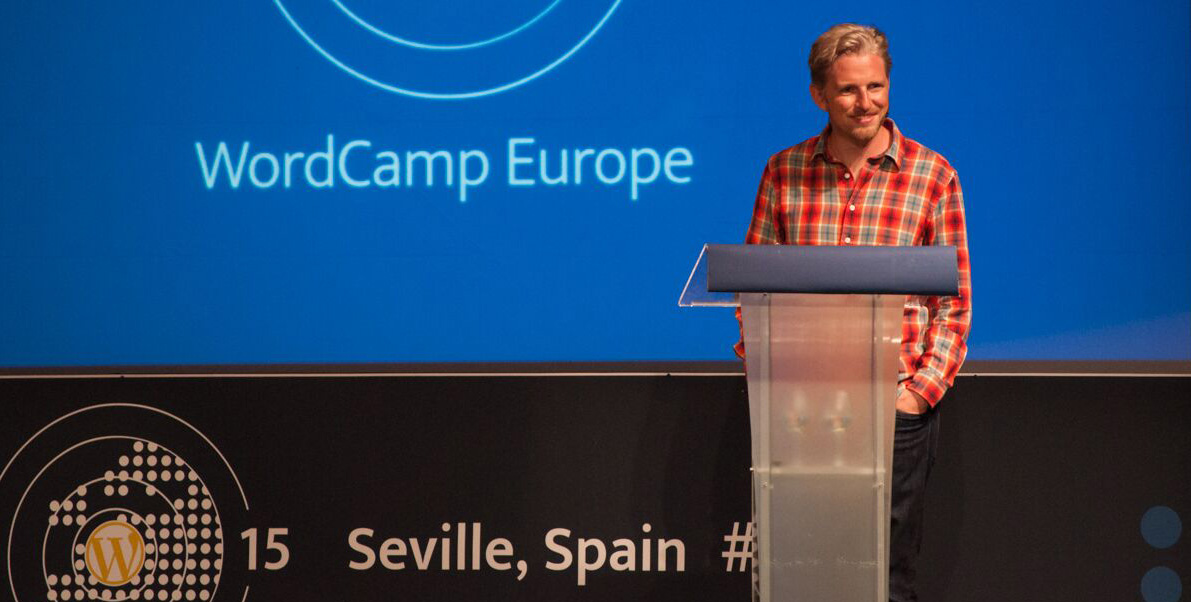
The video of Matt Mullenweg’s Q&A session at WordCamp Europe is now published on WordPress.tv. For those who were unable to attend, this session provides a glimpse into what WordPress’ co-founder sees for the future of the software and the community.
One of the most exciting parts of the video is where Mullenweg talks about the potential of WordPress.org to serve other languages and eventually expand avenues of core contribution to non-English speaking audiences.
When asked what kind of contribution can be made to improve WordPress.org for Rosetta sites, themes, and plugins, Mullenweg replied:
Themes and plugins are undoubtedly the most important. To me, the next most important things are the Rosetta sites and having theme and plugin directories available on the Rosetta sites. There is actually a great example at ro.wordpress.org, which is the Romanian Rosetta site that shows both the potential and the problem:
Now there are themes and plugins menu items there, which none of the Rosetta sites have had prior to this. But when you click on it you see mostly English in the plugin descriptions, even things like screenshots and tutorials.
He described these updates to WordPress.org as just a “hint of what could be amazing” one day. Mullenweg noted that despite Europe having 23+ recognized languages, attendees at the WordCamp were all speaking English. However, not all areas of the world are populated by people with bilingual capabilities.
I think it would be amazing to open up WordPress to have a first priority experience of the thousands of plugins and themes that are available for people who do not speak a word of English. Right now WordPress is just not accessible to that group. Luckily, over half the people in Europe are bilingual… In places where that’s a possibility, WordPress can still do well even though we don’t have a native experience in someone’s mother tongue.
But English is only the third most popular language in the world and it’s not the fastest growing. There are huge audiences that I think would be an important part of the community. Someday I want it to be where, instead of things being translated from English to a different language, we’re getting core contributions translated from, say, Chinese or Hindi or Spanish, into English to be reviewed. We’re not looking to just how to translate plugins from English into other languages but vice versa. I think that will be when we’re successful.
In the same way that better language support opens up WordPress to a wider audience, Mullenweg believes that the customizer will open up the software for more non-technical users. During the Q&A he shared his thoughts on the future of the customizer:
As we currently are working, the customizer is the way forward…It essentially removes the fear and disconnect between wp-admin and the front end of a site. It’s a bridge that gives people the confidence to make changes while seeing those changes in real time. The real time feedback and safety net of seeing that, and being able to undo and redo things, is incredibly empowering, particularly for non-technical users who don’t know how to dive into CSS or the code. I personally believe that the work on the customizer is some of the most important going on in the WordPress project right now.
In addition to building the feature in a way that is responsive to mobile devices, Mullenweg noted that the customizer currently falls short on desktop:
The customizer is, for lack of a better word, a narrow interface, because it needs to show your site in addition to the admin. I think we need to do a better job of making sure that interface scales up as well as down, meaning that if you do have the space or would like to make it fullscreen, that it is responsive, so that it enlarges into an interface that probably looks and works much like the current wp-admin interface for being a fullscreen experience for editing and modifying menus, widgets, colors, fonts, header images, site title, all the things that are key to the presentation of your site.
It is curious that the customizer is being pushed through to WordPress 4.3 without the ability to scale up gracefully. If the situation were reversed, where the feature was unfriendly to mobile users, it seems less likely that it would have been deemed ready for core. This illustrates the WordPress project’s strong emphasis on being positioned to attract mobile users.
Mullenweg encouraged attendees to keep an eye on the customizer, because he believes it will do a much better job than Wix and Squarespace when it comes to providing a user-friendly way to customizer websites.
The entirety of the 66-minute long Q&A session is included in the video below. In addition to languages and the customizer, Mullenweg also answers questions about security, WordPress’ minimum PHP version, the possibility of multilingual features in core, and the importance of building for mobile.
Good stuff thanks for posting! :)